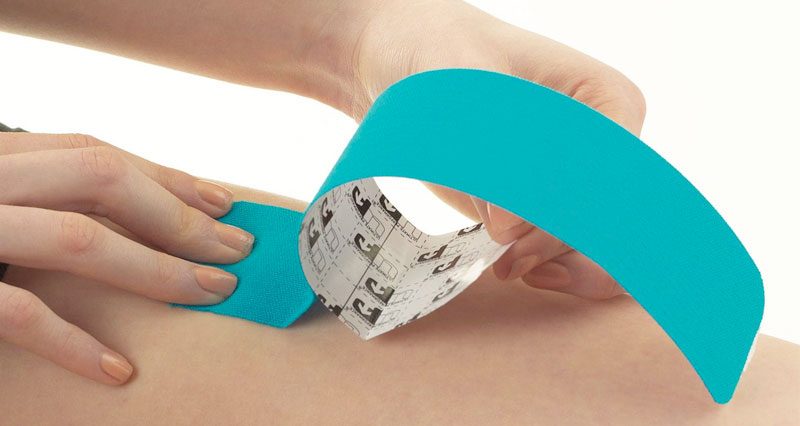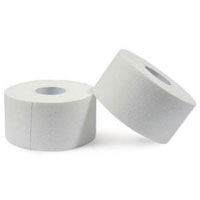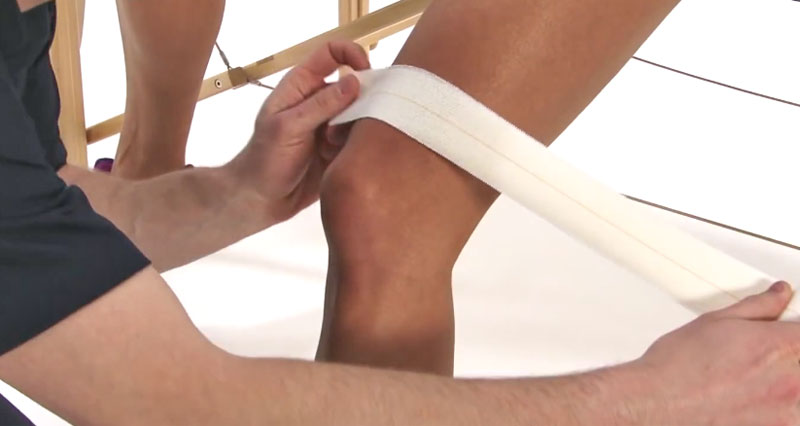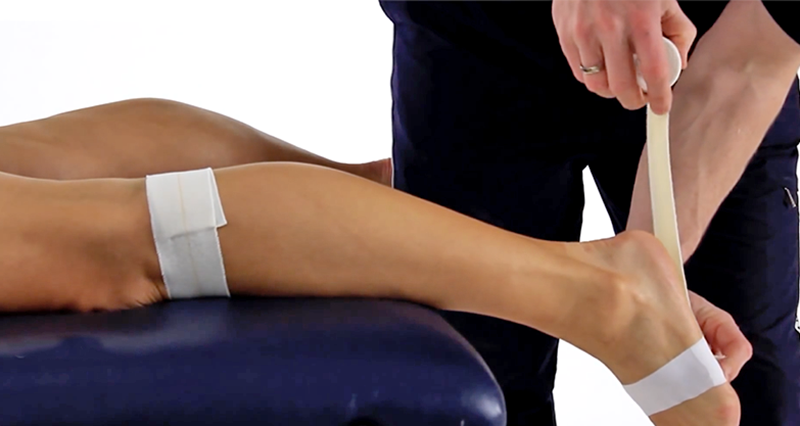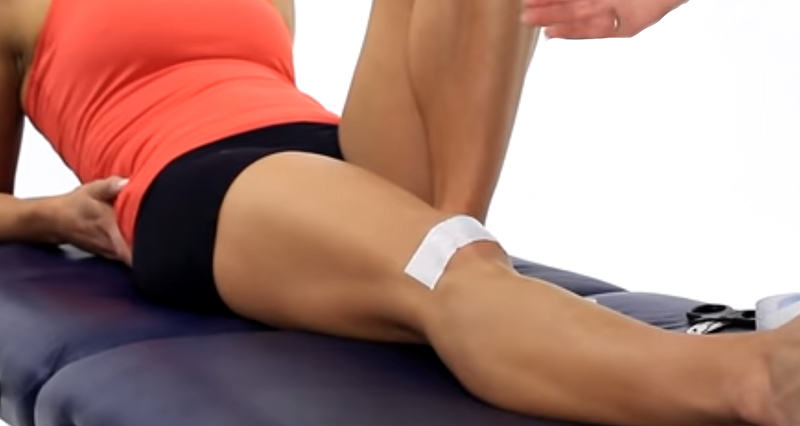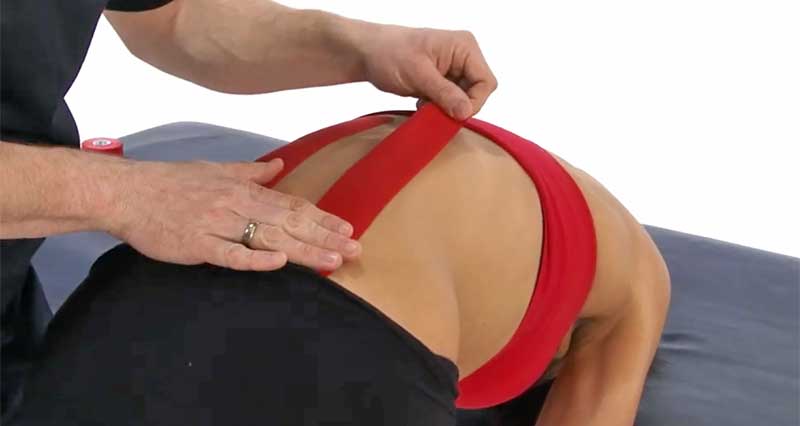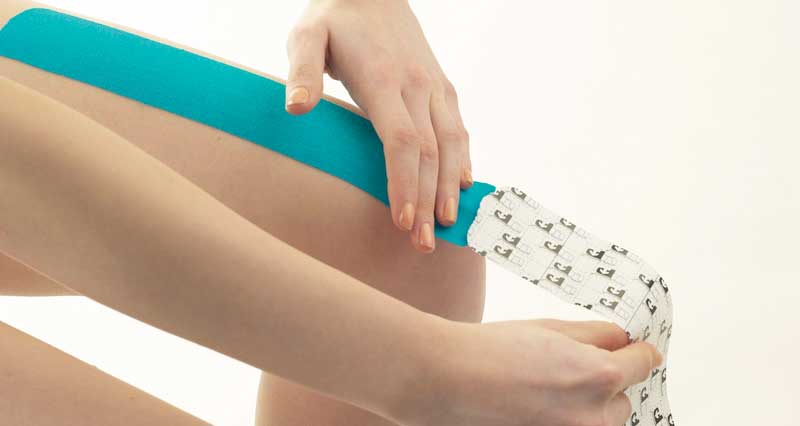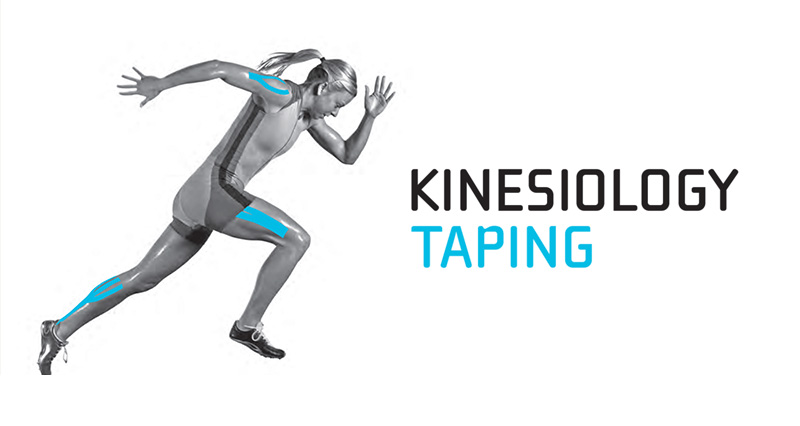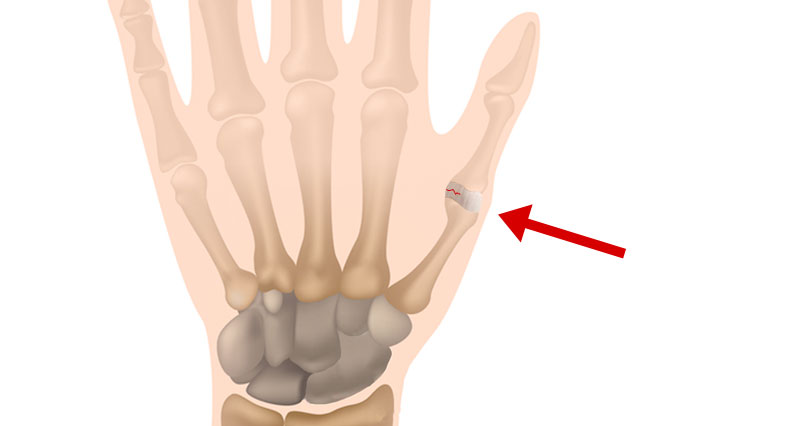Kinesiology taping, often referred to as kinesio tape or KT tape, is a taping technique that involves applying a flexible, elastic adhesive tape to the skin. Sports medicine professionals often use Kinesiology tape in physical therapy. It provides support and stability to muscles and joints, reduces pain, aids lymphatic drainage and may even improve performance. Here we explain what Kinesiology tape is, its uses and evidence for its effectiveness.
Kinesiology taping tutorials
What is Kinesiology tape?
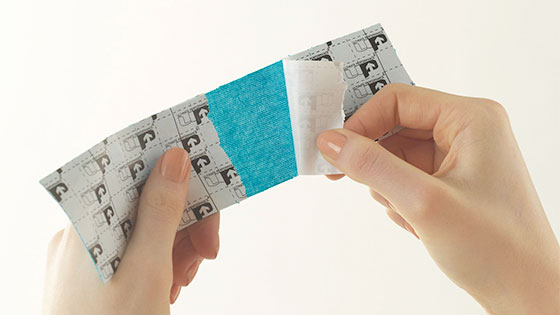
Kinesiology tape is usually made of cotton or synthetic material with an adhesive backing. Its design aims to mimic the elasticity and thickness of human skin.
How is kinesiology taping different?
Kinesiology tape is differs to other forms of sports tape such as elastic adhesive bandage and zinc oxide tape in the following ways:
Elasticity
Kinesiology tape is stretchy and elastic by design, similar to the elasticity of human muscles. Therefore, this elasticity allows for a wide range of motion without restricting movement. It does this being stretching laterally or sideways, where other tape stretches along its length.
Breathable
Kinesiology tape is breathable. As a result, it allows air to flow through it and moisture to evaporate from the skin. This reduces the risk of skin irritation or discomfort.
Adhesive
Heat activates the adhesive on the Kinesiology tape. When applied to the skin, the heat from rubbing the tape activates the adhesive, ensuring it adheres more securely to the skin.
Kinesiology tape colours
Kinesiology tape comes in various colors. However, the color of the tape doesn’t have a proven impact on its effectiveness. It is just a matter of choice.
What are the uses of Kinesiology taping?
Sports physiotherapists and other health care providers use Kinesiology taping for the following applications:
Muscle and Joint Support
One of the primary uses of kinesiology taping is to provide support to muscles and joints. For example to activate or deactivate muscles at different stages of muscle strain rehabilitation. It is also thought to help improve proprioception (awareness of the body’s position) and provide stability to injured or weakened areas.
Reducing Pain
Professional therapists often use Kinesiology tape to alleviate pain. For example, associated with muscle strains, injuries, and conditions like tendonitis. It may work by lifting the skin slightly, which as a result, reduces pressure on pain receptors and increases blood flow.
Lymphatic Drainage
The unique taping techniques used with kinesiology tape help facilitate lymphatic drainage. As a result, swelling and inflammation in the affected area are reduced.
Athletic Performance
Some athletes use kinesiology tape to enhance their performance by providing support to specific muscle groups and joints while allowing for a full range of motion.
What is the evidence for Kinesiology taping?
Here are a few specific examples of studies on kinesiology taping, along with brief summaries of their findings. Please note that the effectiveness of kinesiology tape can vary depending on the specific condition, application technique, and individual factors. These studies represent a range of research in this field:
Kinesiology Taping for Patellofemoral Pain Syndrome
Study: A 2016 systematic review and meta-analysis published in the journal “Physical Therapy in Sport.”
Findings: The review examined the use of kinesiology taping in individuals with patellofemoral pain syndrome (PFPS) and found that it may provide short-term pain relief and functional improvement. However, the authors noted that the quality of evidence was generally low, and more high-quality studies were needed.
Kinesiology Taping for Rotator Cuff Tendinopathy
Study: A 2016 randomized controlled trial published in the “Journal of Shoulder and Elbow Surgery.”
Findings: The study investigated the effects of kinesiology taping in patients with rotator cuff tendinopathy. The researchers found that kinesiology tape provided short-term improvements in pain and shoulder function compared to a placebo tape. However, the long-term benefits were not as clear.
Kinesiology Taping for Acute Ankle Sprains
Study: A 2017 study published in the “Journal of Sport Rehabilitation.”
Findings: This study assessed the effects of kinesiology taping on pain and functional outcomes in individuals with acute ankle sprains. The results showed that kinesiology tape provided some immediate pain relief and improved ankle range of motion compared to a placebo tape.
Kinesiology Taping and Muscle Strength
Study: A 2019 systematic review and meta-analysis published in the “Journal of Sports Science & Medicine.”
Findings: This review analyzed the effects of kinesiology taping on muscle strength and power. The findings suggested that kinesiology tape might have a small positive effect on muscle strength and power, particularly in specific muscle groups and under certain conditions. However, the clinical significance of these effects was debated.
For Lower Back Pain
Study: A 2020 randomized controlled trial published in the “Journal of Clinical Medicine.”
Findings: This study investigated the use of kinesiology taping in individuals with chronic lower back pain. The researchers found that kinesiology tape, when combined with exercise, provided significant improvements in pain intensity, disability, and quality of life. This was when compared to exercise alone.
These studies represent a selection of research on kinesiology taping, and there are many more studies available in scientific literature. It’s important to note that while some studies suggest potential benefits, the overall evidence for kinesiology tape remains mixed. More high-quality research is needed to establish its effectiveness for various conditions and applications. Individual responses to kinesiology tape vary. It is often used as part of a comprehensive treatment plan under the guidance of healthcare professionals.
